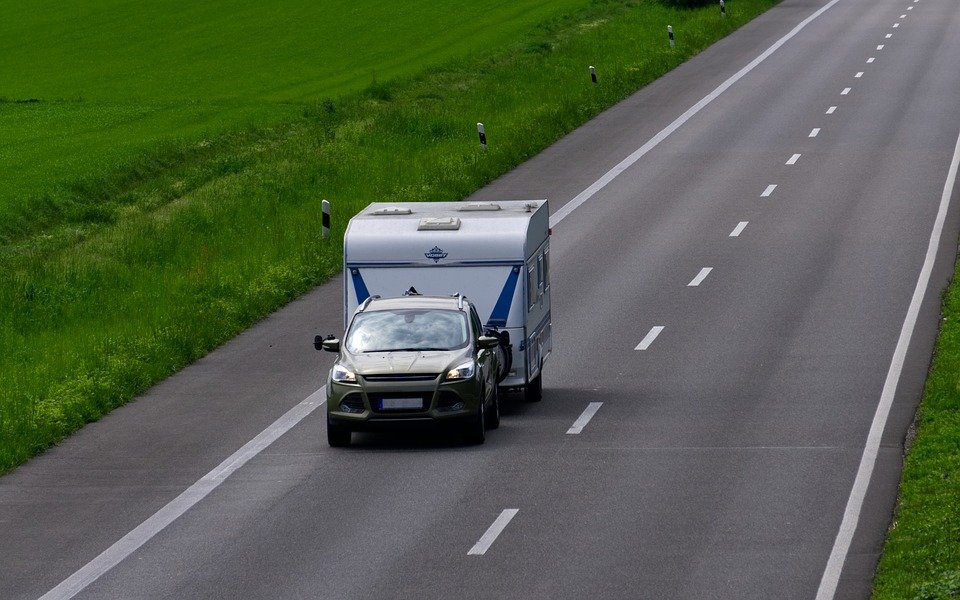There is nothing worse than setting off on a holiday or long trip with your trailer in tow only to break down somewhere between home and your destination. Not only, will you spoil your trip and potentially find yourself paying a fortune in recovery and further travel costs, but you also need to consider the safety of your car. Items such as tyres are a factor in many car accidents, setting off without performing a car inspection before a road trip, therefore, is just not worth the risk.
Read on to find out what should be included in a car and trailer inspection checklist. It is worth noting that this list is geared towards those pulling trailers, but can also be used if you are just preparing car for long trip.
READ ALSO: Converting a Van into a Camper | A Planning Guide
1. Check the condition of your tyres
When preparing car for long trip it is essential that you check the tyres for wear and tear. This should also include a thorough check of the tyres on any trailer you plan to take with you, as they are not used regularly the rubber can become damaged, this can often be visible through the appearance of small cracks on the sidewalls. Check the tyre visibly for any signs of damage and used a thread gauge to check how much tread you have left. It is wise to consider changing a tyre in readiness for a long journey if the tread is below 2.5mm as tire as worn tyres get hotter quicker on long journeys which can lead to blowouts. You should also check the air pressure of each tyre, referring to the manufacturer’s handbook to determine optimum pressure levels.
2. Check the wheels
Any trailer safety inspection checklist or indeed car inspection should also include checking the bearings, hubs, and axle on the wheel. To do this, the wheel will need to be up off the ground. To check the bearings, grab the tyre at both sides and wobble, any movement means you will have to tighten the bearings whilst a rumbling noise on spinning the wheel signifies that the bearings might need replacing. You should also do a visible inspection of the axle, check that it is straight and square and that it is sitting on the spring’s centre pin. If unsure, a trip to the garage might be necessary.
3. Check Brakes and Suspension
Whilst the trailer is off the ground you should have an inspection of the braking and suspension system. Brakes might not be present on a trailer but if they are, check the fluid levels, whether any pads need replacing and whether any adjustment is required. You should also check for any damage to the suspension system, including; loose bolts, damage to leaves or separation of leaves, leaking shock absorber and the condition of brushes. While underneath the trailer it is also a good idea to check the chassis for any signs of rust and to check that any bolts holding the body to the chassis are in good condition and are tightened adequately.
4. Lights
Any list detailing what to check on car before road trip will tell you to always check that lights are working on your vehicle before you set off. The same is true for trailers and as a minimum on both your trailer and car, you should turn all the lights on and have a walk around the vehicle to make sure they are working. It is also an idea to check connections and to dust the inside of lenses to improve light intensity, which makes you more visible on the road. You can do this by removing the lens cover, giving the light underneath a good dust and checking for any signs of corrosion to the connections.
5. Check the tow hitch
You should always check the tow hitch for any signs of wear and tear and that there is plenty of lubrication on all parts. A Treg tye hitch requires you to check that the pin and nylon hub are working properly together whilst checking a normal ball type hitch means that you should check all parts are able to move freely.
6. Check Fluids
A car inspection before road trip should always include a check of fluids that your car needs to run properly. Check and replace if necessary your oil, coolant, windscreen wash, and brake fluid. You might want to have a quick check of your power steering fluid too. You can refer to your manufacturer’s handbook to find out where all the reservoirs are located.
READ ALSO: Diesel, Petrol, or LPG: Best Fuel for Campervans and Motorhomes
Author Bio:
The article is written by Yazi Jepson, a freelance writer who writes and edits content for many businesses in Australia. This time, she writes for Online Auction Group, a leading platform for those in search of car auctions across Australia.




One comment